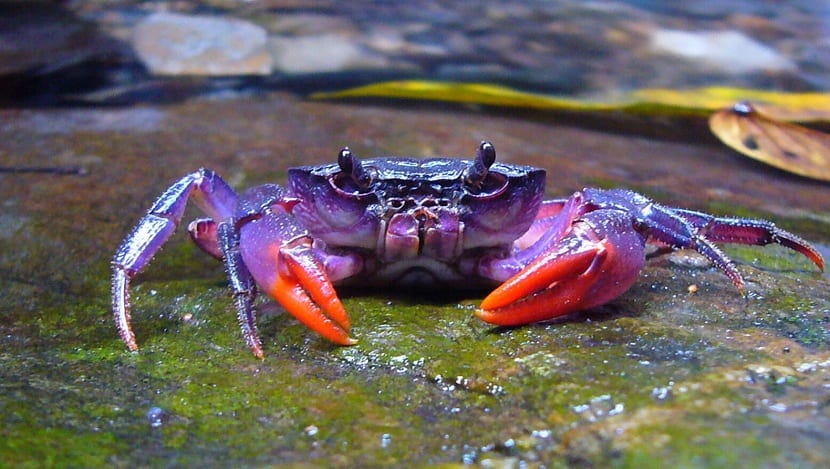
Among the fauna found in rivers we have al River crab. It is a decapod arthropod whose body is covered by a shell. This shell is considered an exoskeleton and serves to protect itself. It is unlike us, instead of having the bones on the inside, they have them on the outside. In gastronomy, crab meat is quite in demand and this means that its existence may be threatened.
In this article we are going to tell you about the characteristics and way of life of the crayfish to learn more about it.
Key features
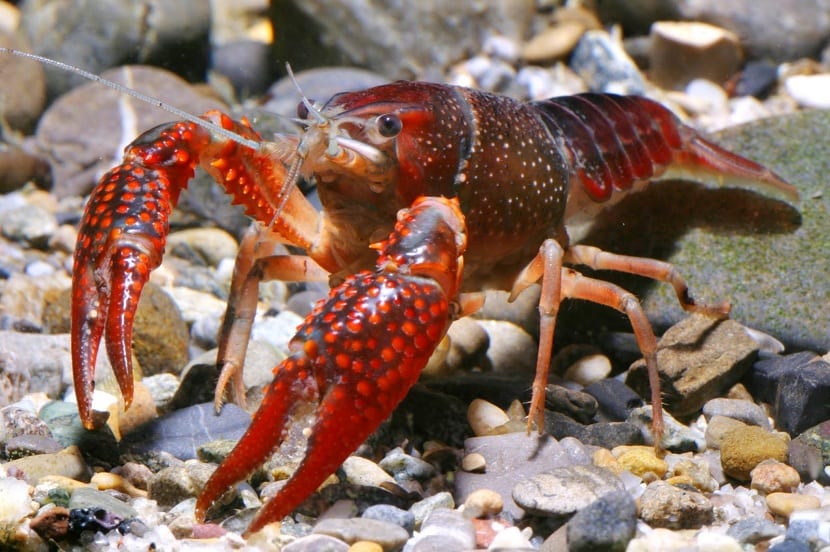
The exoskeleton it is covered with is quite hard and it serves to protect itself. It is composed mainly of calcium. It presents the entire body fragmented into portions that allow it to move and move around the sites within the river. The main portions are the anterior and posterior, also called cephalothorax and abdomen. In the anterior part is the head and thorax separated by the cervical sulcus.
On the other hand, we have that of the carapace prolonged in an extension where the eyes are inserted. Its mouth is placed on the ventral part of the head and surrounded by legs that help the animal to conduct movement.
The autochthonous crab is found in rivers throughout the peninsula and they are usually easily distinguished as they have 5 pairs of legs on the sides and in the ventral area of the cephalothorax. The first pair of legs has quite developed claws that serve both for defense and for capturing food. It is perhaps this claw that makes crabs characteristic and for which they are famous.
The next two pairs of legs also have clamps, but they are much smaller in size than the first. The first are the most important and useful for the animal. The last two pairs of legs have a claw that they use for proper grip and stability when moving.
All pairs of legs are used to move except the first one, which is always ready to defend itself or attack prey.
Body functions
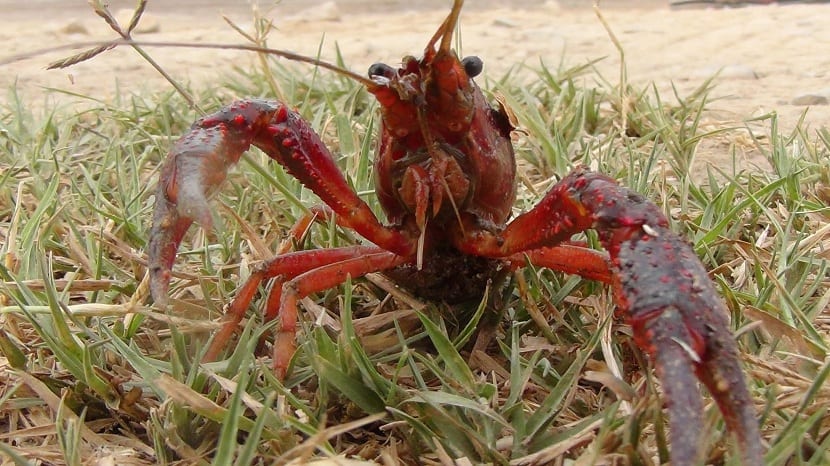
The antennae are arranged at the end of the face and it also has some smaller anténules. These antennas have the utility of being the organ by which they adapt to the environment and have a sensory function. In addition, it serves to maintain good balance and to be able to feel everything around them.
The respiratory system works thanks to gills that it has in two chambers that are arranged on both sides of the cavity that the cephalothorax has. Its abdomen also has six segments that can be flexed and it has a pair of appendages. These appendages are biremean and well developed. In the segment of the end of the telson is a powerful swimming tail fin. This is what makes the crayfish a good swimmer and can move easily even though the river has somewhat stronger currents.
The capacity of the crabs must be sufficient to survive in environments where the current of water is strong. For example, when there are heavy rains, the river flow increases enormously and the crabs must be prepared to survive in these situations.
As for the digestive system, it is very discreet. From the outside you can only see the anus that is in the ventral part of the telson.
In order to differentiate male and female crabs, some differences must be established between the sexual orifices. In males, these holes open in the basal parts of the last legs and in the first two pairs the copulatory organ is located. In females, the sexual orifices are on the third pair of legs and the others are either reduced or absent.
Natural habitat
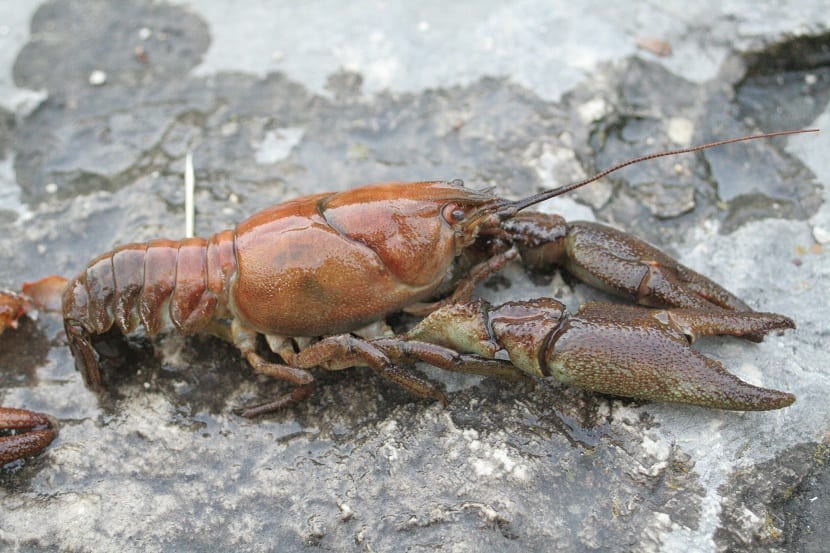
The crayfish is not very demanding in terms of the conditions it needs to live. It lives in all the waters of the Spanish rivers that have a sufficient flow. Although it is not very demanding, it does prefer that the waters are rich in calcium salts to be able to strengthen its exoskeleton and amounts of dissolved oxygen between 3 and 12 mg / l.
Regarding temperatures, They need to be in a range between 8,5 and 22 degrees. The crayfish serves as a good environmental indicator of the quality of the water that our rivers have since if they are contaminated we will not see them. Although it has the capacity to withstand some strong currents, we mainly see them distributed in areas where the speed of the water is very slow. The bottom of the river can change and be located both in shallow places and in others that are more.
He does not like very bright places so he takes the opportunity to hide in the vegetation of the rivers. Sometimes with its pliers it can make a hole by digging if it feels threatened. It can also hide on some bank slopes or under larger stones.
Its maximum activity takes place at night where the light does not make it be discovered by its prey. The time of year when it is most active is between spring and autumn, the rest of the year it is in hibernation in one of its most frequent safe hiding places.
Feeding and reproduction of the crayfish
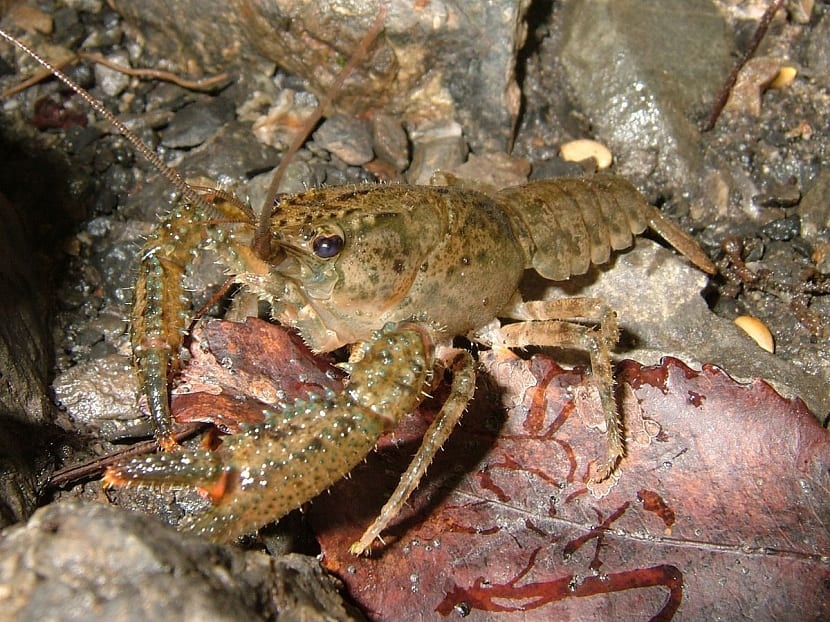
These crabs eat almost everything. Include in your diet small fish, carrion of other animals, amphibian larvae, macroinvertebrates, aquatic plants and even algae. Among the most important predators that you have to watch out for are coleopteran and odonata insects, other larger fish, birds and some mammals such as otters.
Regarding its reproduction, the reproductive season begins before hibernation in which the female is capable of placing between 40 and 80 eggs under the abdomen and fixed on its legs. It protects it while they hibernate until the eggs hatch the following spring.
I hope that this information helps to learn more about the crayfish that we have in the peninsula.